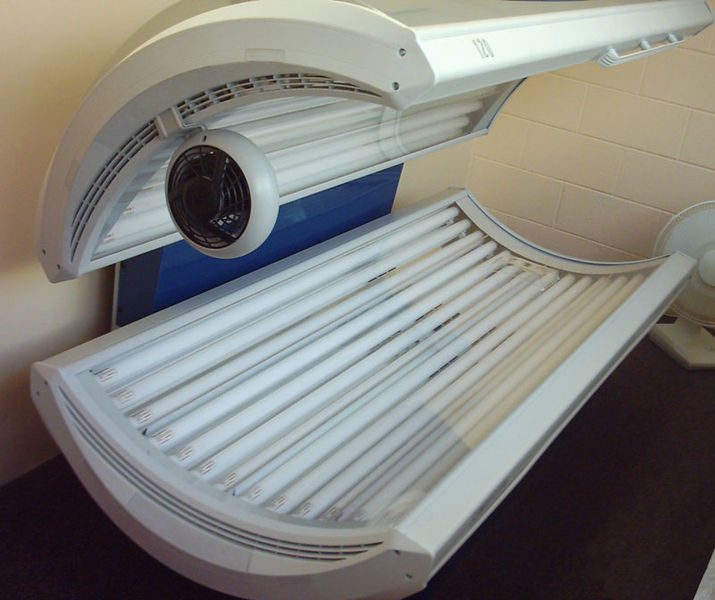Fake Bake
Indoor tanning, specifically in beds, is a common practice among young adults that’s most popular during the homecoming and prom seasons. However, there is more underlying danger involved when it comes to using a tanning bed.
Tanning, by definition is the exposure of ultraviolet
rays on the skin of the body. According to the National Cancer Institute, exposure to UV radiation-whether from the sun or from artificial sources such as sunlamps used in tanning beds-increases the risk of developing skin cancer.
Yet despite this increased danger of cancer, people continue to go to tanning salons.
According to L.A. Tan employee of four years and Ghs senior Kali Hughes, there’s an abundance of customers daily, who must be warned of the risks of tanning before they enter the bed,
“We have to tell them to decrease their time and ask the person if they have their eyewear, and if not they have to buy,” Kali said.
To protect people from too much exposure, most tanning beds have a range of intensities and times to ensure the safety of people.
“We have levels 1-6 at our salon… and the times vary,” Kali said.
Legally, individuals must be 18 years because old in order to use a tanning bed because overexposure of UV rays during childhood increases the risk of skin cancer according to ncls.org. However, this law is continuously broken.
“We have people that will use fake IDs, and make fake accounts,” Kali said.
Senior Gillian Clohecy went tanning her first time last year right before prom. She was a junior and underage.
“I used my friend’s account,” Gillian said when asked how she was able to go tanning.
When asked if she was given warnings about the bed before entering the bed Gillian said, “No, but there are signs up that have warnings.”
Tanning salons such as L.A Tan offers alternatives to bed tanning that is legal to all ages.
Spray tans and tanning lotion have become increasingly popular among people. However, they have not been given a good reputation as they have been explained as “orange” and “bad-smelling.”
“I don’t like how it looks fake/ tanning in the beds is actually a natural tan, “ Gillian commented.
According to skincare and beauty expert, Robert Applebaum, “new fake tan products have gotten rid of the smell and orange tint by going more natural. The products that provide the most natural glow either use a 100 percent natural form of DHA derived from renewable plant sources or mix DHA with keto sugar molecules to provide a natural-looking, longer-lasting glow.” As prom season approaches, spray tans seem to be a healthier alternative to dangerous tanning beds.






